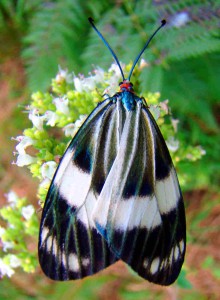
Day fly moth
The Day Fly Moth is an intriguing species of moth found in the rich and diverse ecosystems of the Great Himalayan National Park (GHNP). Unlike typical moths that are nocturnal, the Day Fly Moth is active during the day, displaying a behavior more commonly associated with butterflies. This diurnal activity, combined with its often colorful or subtly patterned wings, makes it a fascinating subject for entomologists and nature enthusiasts visiting GHNP.
Unique Characteristics of the Day Fly Moth
The Day Fly Moth typically exhibits delicate, thin wings and a relatively small body. Its wings may be transparent, softly colored, or lightly patterned—offering camouflage among wildflowers, leaves, and underbrush during daylight hours. Some species of day-flying moths even mimic butterflies in their behavior and appearance, a trait that helps avoid predation.
Habitat in GHNP
In the Great Himalayan National Park, Day Fly Moths are generally found in sunny clearings, meadows, forest edges, and near flowering plants. The varied altitude and abundant vegetation of GHNP—from subtropical broadleaf forests to alpine meadows—offer an ideal habitat for a range of day-flying moth species.
They are especially active in the warmer months between spring and late summer, coinciding with the blooming period of many nectar-producing plants in the park.
Ecological Role
These moths play an important role in pollination within GHNP. Much like butterflies and bees, Day Fly Moths contribute to the reproduction of flowering plants. They also serve as prey for various bird and insect species, forming an essential link in the park’s food web. The presence of day-flying moths in GHNP highlights the health of the park’s ecosystem and its floral diversity.
Conservation Importance
Though not all species of Day Fly Moths are threatened, their sensitivity to habitat changes makes them important bioindicators. Habitat preservation within GHNP ensures that these moths, along with the plants and predators they interact with, continue to thrive in balance.
Conclusion
The Day Fly Moth adds yet another layer of beauty and complexity to the Great Himalayan National Park. Its presence not only enhances the visual experience for visitors but also underscores the park’s ecological richness. As a daytime pollinator and a key component of GHNP’s biodiversity, this moth exemplifies the interconnectivity of life in this pristine Himalayan ecosystem.



